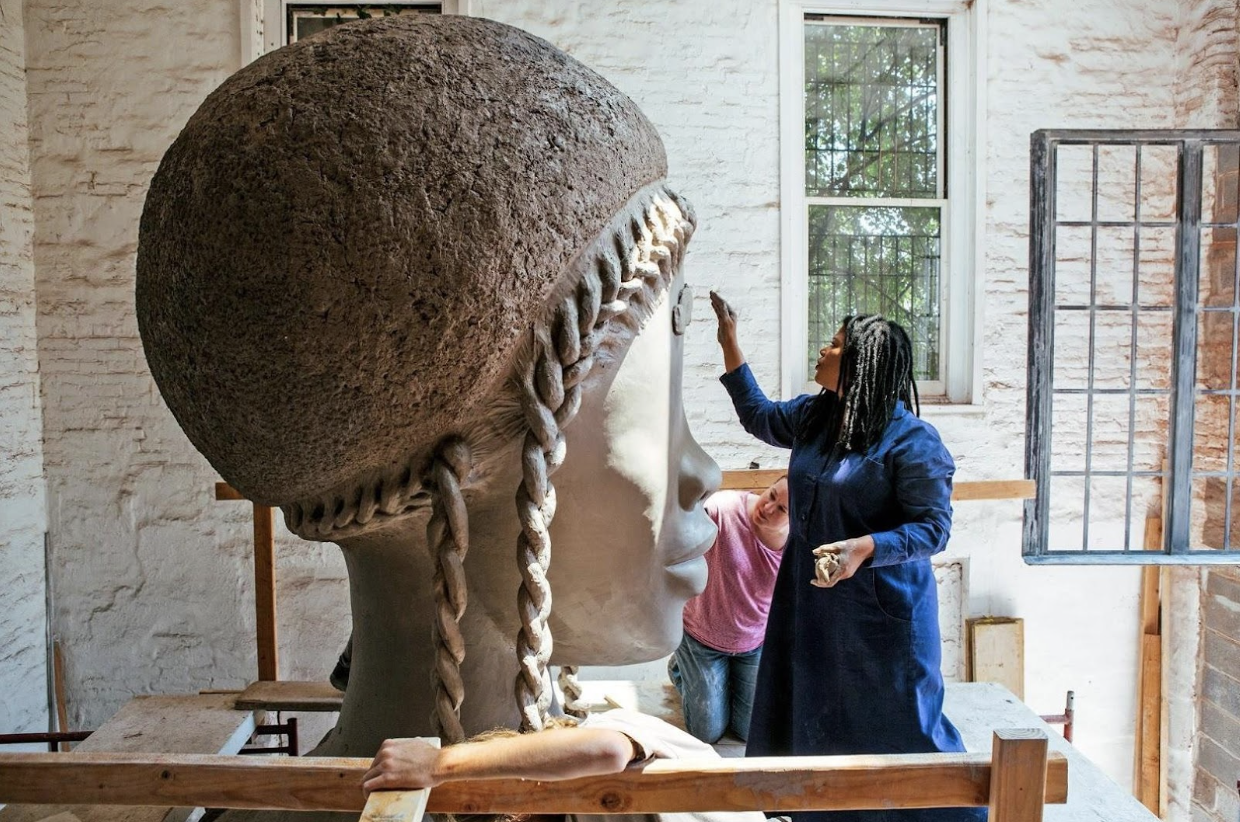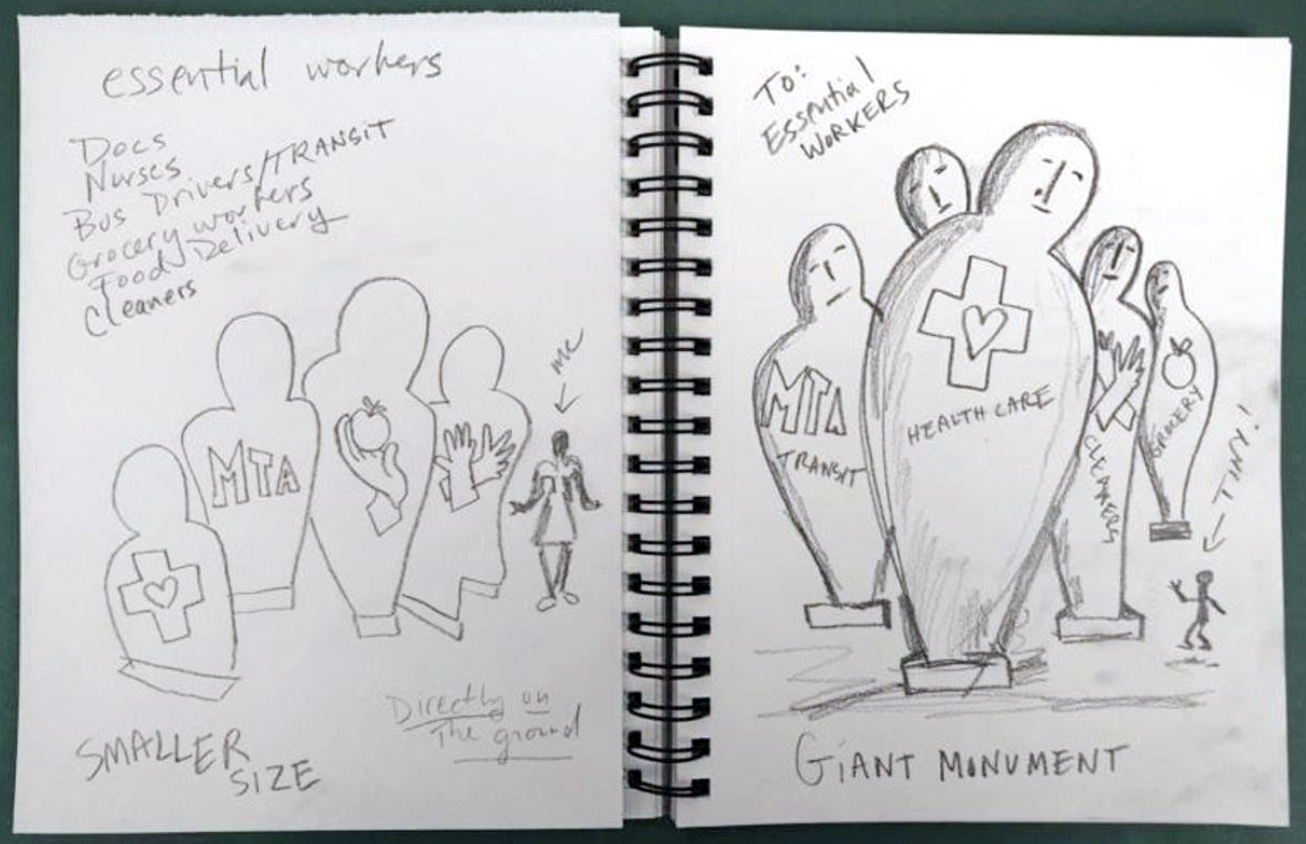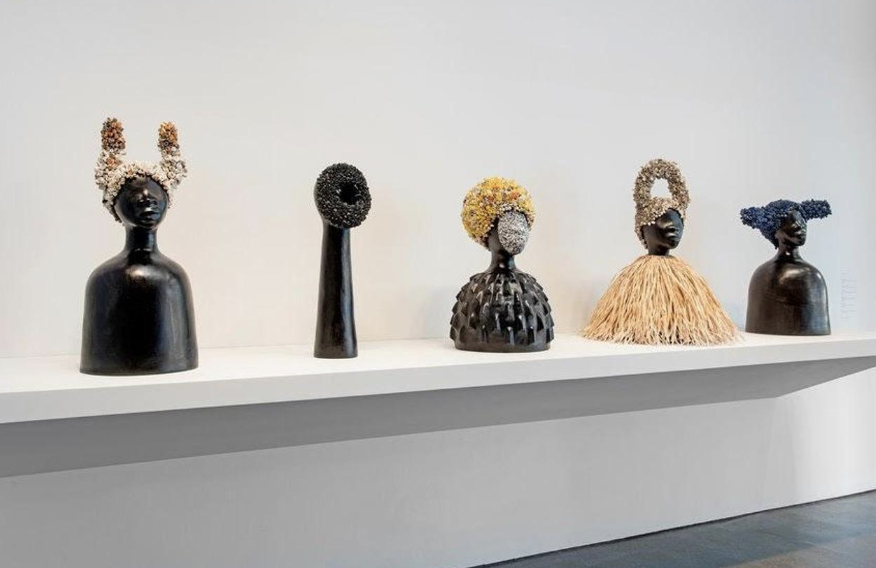Overview
Students will prepare for upcoming art-making lessons using close-looking, speaking, writing, and/or sketchbook prompts.
Materials and Tools
- Pencil
- Sketchbook or one to two pieces of paper
Activities
Note: The following activities are written with sample language you may use with your students. Following the art-making lesson, you may choose as many reflection activities as desired for students to work on in class or independently.
Step 1: Introduction and Close Looking: Simone Leigh (20 minutes)
The word scale is used to describe the size of an artwork. A sculpture can be large in scale, like the Statue of Liberty, or small in scale, like some of the sculptures by Simone Leigh. Scale can also describe the size of one part of a sculpture in relation to others. Scale has a big impact on how we experience works of art.
Note to Teachers: Before teaching with a work of art, spend some time looking closely at it on your own. Familiarizing yourself with the artwork will prepare you to guide the close-looking activity.
If your students are new to looking at art together, you can introduce the activity to students in the following way:
Today we are going to spend some time looking at and discussing a work of art together. When we look at art, there are no right or wrong answers. I’m going to ask you to look closely, share your ideas about what you see, and listen respectfully to each other’s ideas. Everyone’s ideas are important. We all see things differently, and when we look at art, we can learn to see through each other’s eyes.


Look closely at the images of Brick House by Simone Leigh in Slides #3 and #4. As you look at the images, consider the questions below and write down your responses.
- What stands out to you?
- What does the form of this sculpture remind you of?
Brick House is 16 feet tall.
- How do you think this sculpture would be different if it was very small?
- Why do you think it was important to the artist to make this sculpture so large?
In New York City, there are only a small handful of monuments depicting important African American figures in U.S. history. Of these, only one is of an African American woman—Harriet Tubman in Harlem. In an interview about Brick House, Simone Leigh said, “I’ve been thinking about the labor of Black women, what forms of knowledge they carry, and what kinds of labor they are involved in that’s not valued.”
- What do you think is the message of this sculpture?
Step 2: Sketchbook (20 minutes)
Look at the sketches in Slides #6 and #7. This artist is developing ideas for a monument to essential workers. The artist has simplified the human form and experimented with scale. A smaller and more human scale is shown on the left; a larger, more overwhelming scale is on the right. Think about the scale of your monument.

- How can you create a strong shape that can be seen and experienced from a distance?
Imagine different sizes for your monument. Sketch some strong, simplified shapes that will impact a viewer from both up close and far away. Draw a small figure next to your monument sketch that shows its scale.
- If you could work with architects and builders, how large would you make your monument?
After giving students time to sketch, invite them to share.
- What scale do you think best represents your monument idea? Why?
Resources

Simone Leigh. Hammer Projects: installation view of small sculptures. 2016, Hammer Museum, Los Angeles
Photo of Simone Leigh working on Brick House in 2018
Simone Leigh. Brick House. 2020, installed on the High Line, New York
Simone Leigh video on making Brick House
CBS Interview with Simone Leigh
The New York Times on Simone Leigh
